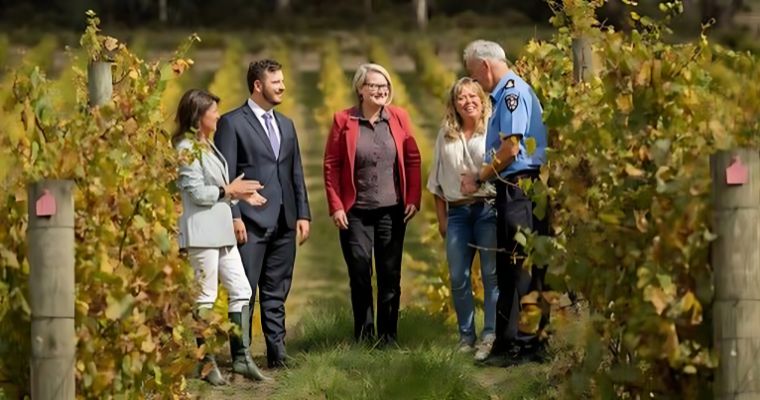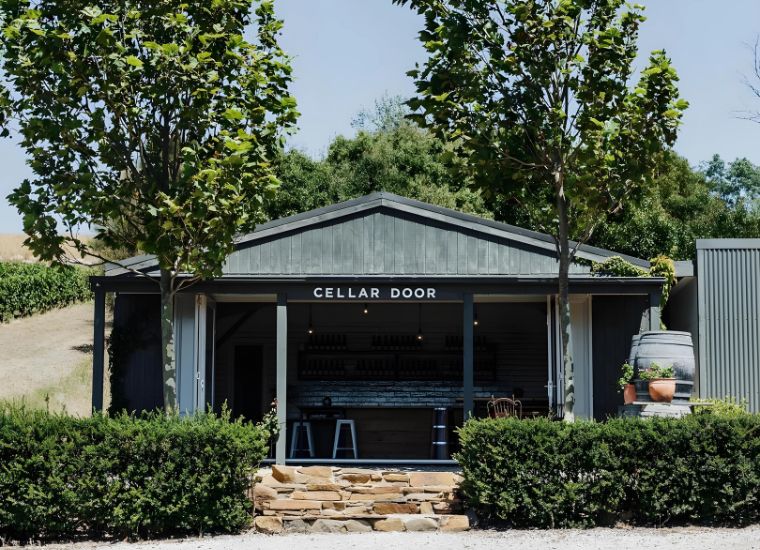Early Bird
Deadline
January 31, 2026
Judging
Date
May 18, 2026
Winners
Announced
June 10, 2026

In 20 years, Tasmania’s area under vine has doubled. At 2,100 hectares, the extent of the island’s vineyards remains minuscule compared to those on mainland Australia. However, a big story is fermenting in terms of quality.
Regions of cooler climate viticulture including Tasmania, the Yarra Valley, the Adelaide Hills, Mornington Peninsula, and Margaret River, remain identified with positive commercial attributes, while the majority of Australian wine regions suffer from uncertainty. These cooler regions do not sell a lot of wine to China and produce a premium style, more expensive wine with better margins. Tasmania will increasingly be on the radar of international wine commerce.
Research commissioned by Wine Tasmania shows strong growth in the Tasmanian wine sector, making it one of the most significant contributors to the local economy. Tasmania’s wine sector produces approximately 895,000 bottles of wine worth $420m annually, a figure that is projected to grow to $2b by 2040 and will make the Tasmanian wine sector the highest contributor to the Tasmanian economy.
Decanter recently reported: “Australia’s southernmost state bagged 12 out of 13 Pinot Noir trophies at the country’s Capital City Wine Shows between 2021 and 2022. In 2022, not only was House of Arras’ Museum Release Blanc de Blancs 2001 pronounced World Champion Library Vintage at the Champagne & Sparkling Wine World Championships but Tolpuddle’s 2021 Chardonnay was named Decanter’s White Wine of the Year.”

Sheralee Davies, CEO of Wine Tasmania; source: The Examiner
Wine Tasmania’s CEO (aka the “Wine Queen”), Sheralee Davies, created the time to answer a few questions about this intriguing wine region.
Tasmania's first vineyard was planted way back in 1826 and it's the home of Australia's oldest sparkling wine on record, from the 1926 vintage. However, after this brave early start to the island's wine growing, there was a large break until the first vines of the 'modern' Tasmanian wine sector were planted in the 1950s. It took a little while for things to grow, with fewer than 100 hectares under vine in the late 1980s - at this stage, the official advice was that Tasmania wasn't suited to wine grapes, that it was too cold, too unpredictable, and too remote. Fortunately, this advice was ignored, and Tasmania's wine sector has steadily grown since the 1990s, with 2400 hectares of vineyard today. Tasmania’s wine production is roughly 1 million dozen bottles annually, less than 1% of Australia’s total wine by volume but more than 4% of its total wine value.
The island has a cool, maritime climate, which produces outstanding quality sparkling wines, pinot noir, chardonnay, riesling, and more. This climate allows our wine grapes to slowly and steadily ripen, producing great elegance and intensity of flavour with a mouthwatering structure meaning these wines are well suited to food and for aging. It’s riskier and more expensive to grow grapes here than anywhere else in the country, but it’s worth it for the outstanding quality of wine this island and its talented wine producers can craft.
The island is roughly the size of Sri Lanka or Hokkaido but with a huge amount of diversity across its 286km in length and 315km in width. Vineyards are generally quite small and planted across seven distinct wine-growing areas. Due to its location and climate, every season is different and no two vintages or vineyards are the same, particularly reflected in the variability of our annual yields.
Wine Tasmania is the peak non-profit organization, supported by voluntary membership by wine producers. Our key roles are to grow the awareness, demand, value, and visitation associated with Tasmanian wine, to provide technical support around the sustainable production of grapes and wine, and to represent the island's wine producers, particularly to the Tasmanian Government. We have a full-time CEO (me) and a full-time Viticulture & Winemaking Officer (Paul) as well as part-time Marketing & Project Officers (Tess & Allison).
There are two distinct segments in the Australian wine sector - the commercial segment, producing wines below the equivalent of $10/bottle retail, and the premium segment. The experiences, opportunities, and challenges differ for each. Tasmania is entirely in the premium wine sector and our challenges are around managing sustainable growth, retaining and driving wine value and quality, attracting visitors to our regional cellar doors and standing out in the very large world of wine, identifying and encouraging our future customers to prefer the island's wine. As an expensive and risky place to grow grapes, profitability is also a challenge and we are particularly labor-intensive, which creates some workforce challenges.

Image Source: (Wine Tasmania) Cellar Room
As a small wine region with variable yields, Tasmania only currently exports approximately 5% of its total wine production. As we continue to see strong growth in Tasmanian wine production, we will look to grow our export market presence, with a focus on value more so than volume. Even with our modest export volumes, our average value is $21.49/liter (compared with the national average of $3.13/liter) and we will look to drive this value and carefully target our future customers and markets.
Some of these challenges have been mentioned above but can be summarized by our need to ensure we grow demand for our wines ahead of supply. This has been our collective approach and strategy to date and has led to a very strong position. As we experience accelerated growth in wine production, we need to more quickly grow demand for our wines.
[[relatedPurchasesItems-61]]
Working with our wine business members, Wine Tasmania has a key role to play in each of the following priority areas:
- Building Tasmania's distinct and premium wine reputation, focused on high quality, value, and provenance
- Supporting sustainable and market-led growth
- Maintaining sector-wide collaboration and diversity of business models
- Attracting a skilled regional workforce
- Promoting wine tourism and attracting high-yielding visitors to our regional cellar doors
Image Source: The Real Review
Enter your Wines now and get in front of top Sommeliers, Wine Directors, and On-Premise Wine Buyers of USA.
